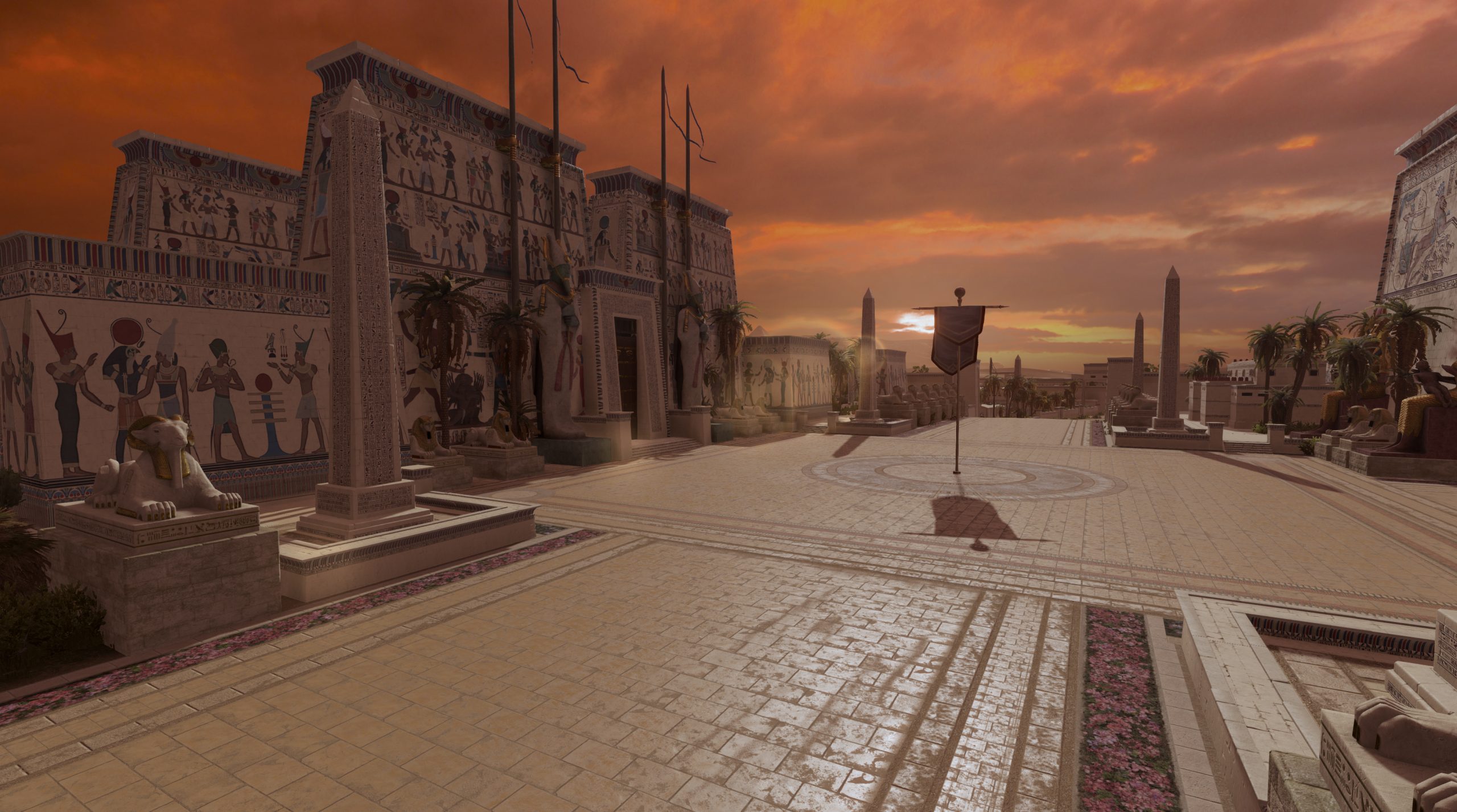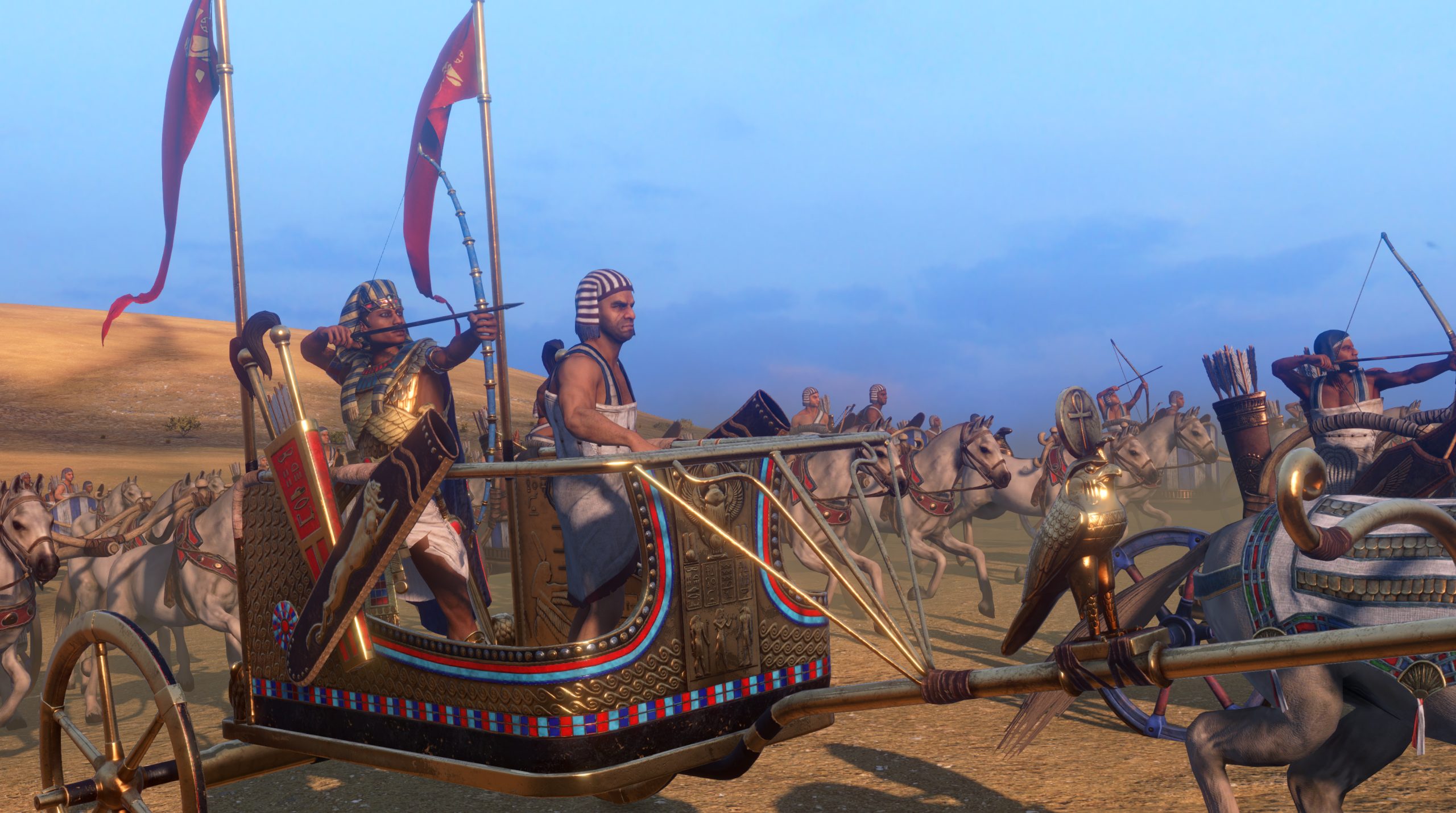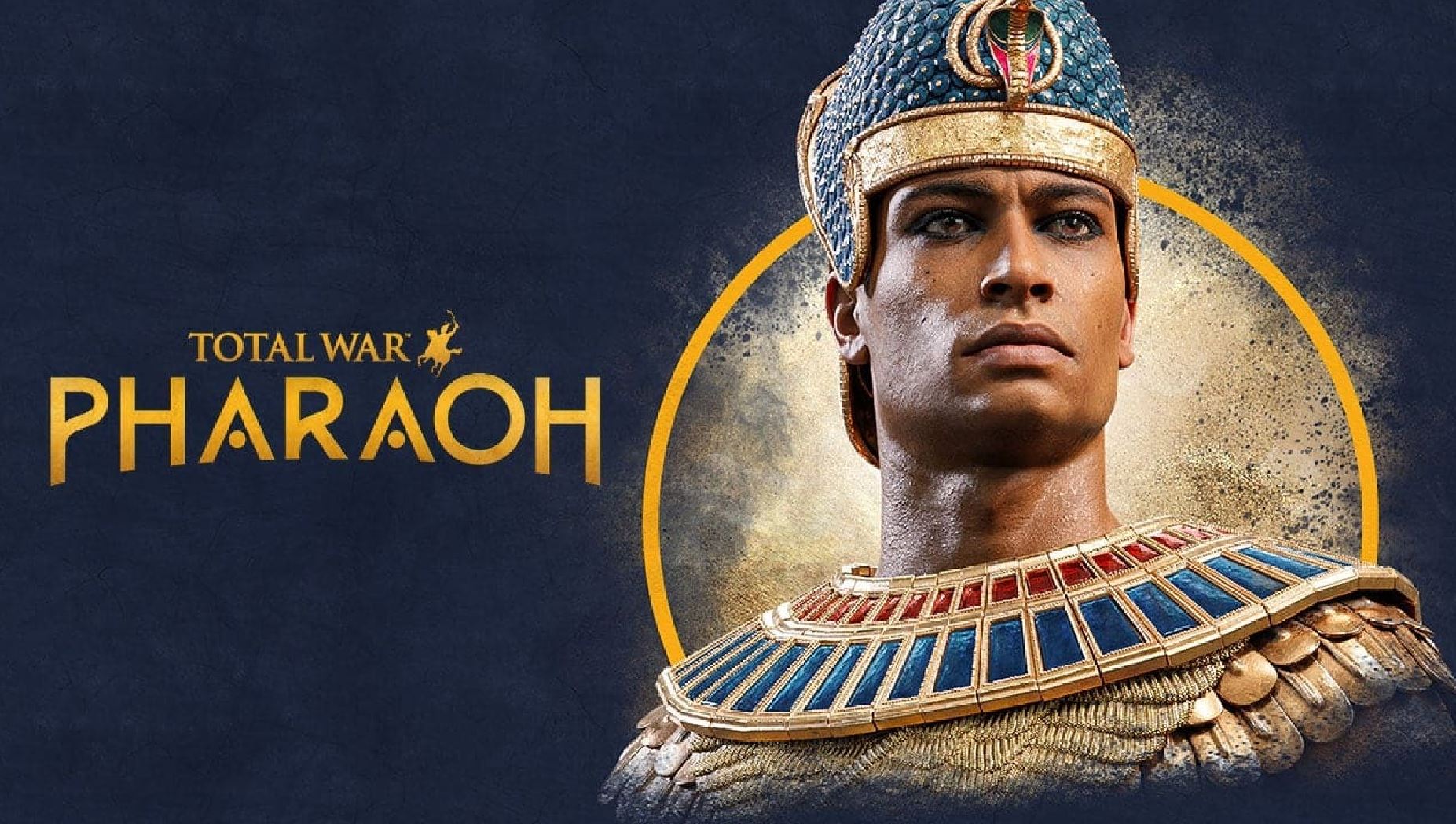We had the opportunity to approach and play the next episode of the Total War license, namely the Pharaoh episode which, as its name suggests, takes place in Ancient Egypt. A good pickaxe in perspective?
Franchise Total War returns to the middle of the Bronze Age, but this time we leave the dangers of the Trojan War to turn to Ancient Egypt, a vast period that has made both historians and the public dream for centuries. Specifically, this new episode of Total War takes place during what is called the New Kingdom, the most prosperous period in all of Egyptian history. In terms of dates, the New Kingdom covers a period ranging from around -1500 to -1000 BC and the title takes place at the very end of the reign of Ramses XI, the tenth and last pharaoh of the XXe dynasty. Like any good self-respecting TW, the game allows you to choose from a multitude of factions or characters, but for the sake of this demo we were only able to approach the battle part. To put it simply, a Total War is divided into two parts. A turn-based campaign with management of our kingdom and a real-time battle phase in which we directly manage our troops via a top view.
Change of time and civilization obliges, Total War Pharaoh completely (or almost) overhauls its battle system. The objective of The Creative Assembly is to immerse the player in what could be a battle in the middle of the Bronze Age. For this purpose the general rhythm of the fights has been slowed down so that each tactical decision has more impact on the battlefield. Things like unit weight, rain impact, and a burnout system now have a big role to play and force even experienced commanders to manage their army in a different way.
A dynamic weather system
As in historical reality, the outcome of a battle sometimes depended heavily on the weather, so countless soothsayers and oracles have been questioned throughout ancient history about the influence good weather (or not) could have on the course of a conflict. Based on this premise, Total War Pharaoh benefits from an all-new dynamic weather system that influences battles both visually and in terms of gameplay. This mechanic is obviously governed by the climate of the region in which you are fighting. It is more likely to be the victim of a sandstorm near the Nile than directly on the coast. Conversely, certain times of the year are more conducive to torrential rains with the monsoon (this season extends from mid-December to February in reality). In terms of the different weather conditions, we will note the fine and clear weather, the rain, the fog, the storm, the storm with lightning and the sandstorm which is surely the worst of all in terms of visibility. Because yes, each weather condition has an impact on the way you play and the rain, for example, greatly limits the use of arrows, while a storm with lightning will also reduce the morale of your armies. The sandstorm on the other hand, if it is a great visual success, can on the other hand be catastrophic on your troop movements since you no longer see anything.

An equally dynamic environment
Besides the weather itself, the environment also benefits from a dynamic system. Fire can spread from grasslands to forests to buildings, and it can be manipulated by the wind in terms of speed and direction. But be careful, because when the player sets fire to buildings in the middle of battle, this will have an impact on the cost of repairing the building in the campaign. Also, something like mud can make a difference to your units by providing bonuses or penalties to units crossing these large areas. To top it off, the mud can dry out when it starts to get very hot… And if you like animals, know that it is possible to come across some Egyptian fauna.
Combat still at the heart of the experience

Melee combat has also been reworked in Total War Pharaoh, including via an animation system that has been updated so that all units have matching combat animations when in combat. In short, each of the units now has a level of animation as complete as for a general in the other episodes, the objective being to improve immersion. You should also know that at the general level, you can now create your own bodyguard unit by equipping it with armor, shields, weapons and even mounts. In addition, when advancing troops there are now 3 different positions:
- Advance: units try to push others back without crossing them
- Hold: they try to maintain their position and their formation
- Give Ground: While remaining in combat, units slowly retreat while still facing forward. Some units have advanced positions, which allows them to maneuver in a specific way and benefit from different advantages (melee attack/defense, missile blocking, speed, etc.) In short, it’s very complete and we feel a clear difference in management in our troops.
Finally, a new statistical concept comes into play in the management of your troops: the durability of the armor. Armor degradation serves as an indicator of how many hits a battalion can still take.
The seat system is more interesting

As in previous games, most sieges take place on 360 degree battlefields. If in the past they were often endless with many wear and tear operations, this time the attack is more rewarding. This is why the developers thought of adding victory points to make everything more tactical and strategic. We were able to play 3 battles in total and we must admit that the changes are very interesting and offer a welcome renewal to the fights. We can’t wait to find out a little more about the Campaign mode.
WE WAIT FOR IT… WITH GREAT IMPATIENCE
No need to beat around the bush, this Total War Pharaoh was a great time. The period is a very good choice and it was obvious that Creative Assembly was going to represent this glorious historical period to us one day. If we know absolutely nothing new about the campaign, it is clear that the battle part has many interesting new features that will appeal to both fans and neophytes. Bravo Pharaoh, moreover it rhymes.
